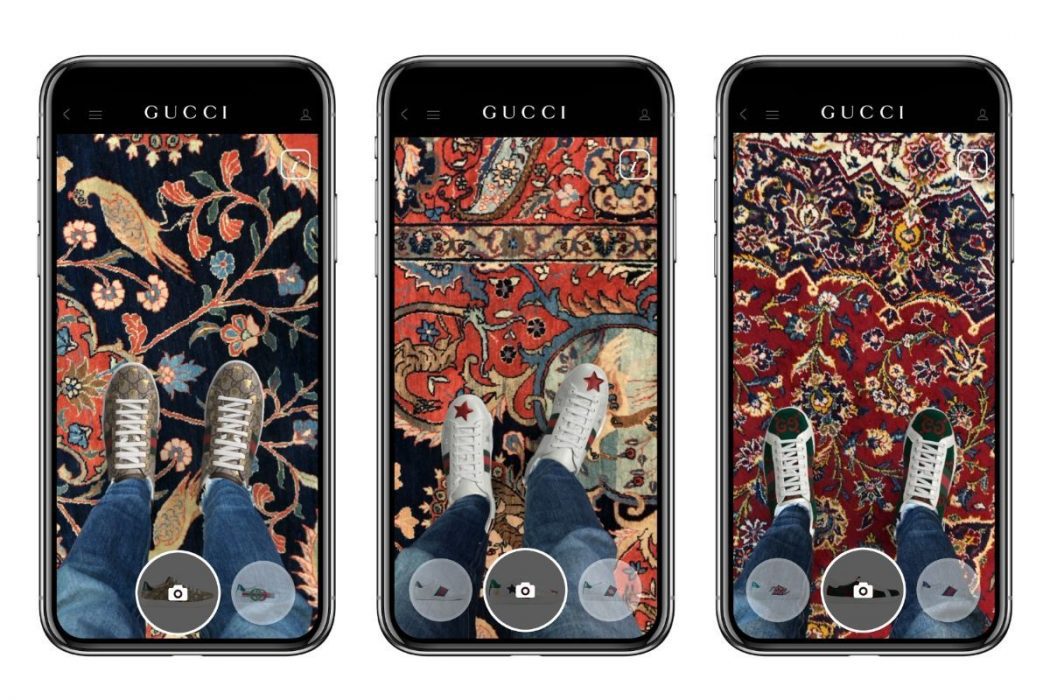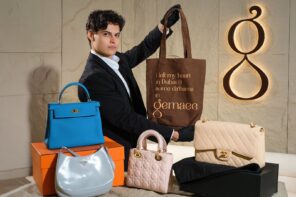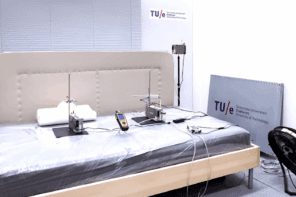Whether it’s browsing in Burberry, hunting down the perfect handbag in Hermès, or dashing through Dior, there is no doubt that the luxury fashion industry — similar to all industries for the moment — has had to rapidly adjust to the ‘new normal’ that has been dealing with the COVID-19 crisis. 11 months into the pandemic and the future still remains uncertain for hospitality and retail sectors in particular. According to Deloitte’s Global Powers of Luxury Goods 2020 report, bricks and mortar retail saw a sharp decline in sales due to the collapse of inbound tourism across the globe, and with travel restrictions still closing pathways for traditional retail sales, online trade has been a saving grace for brands who maintain a digital presence, with increased sales figures during the first half of 2020 reaching its peak in April with a +209% global increase compared to 2019.
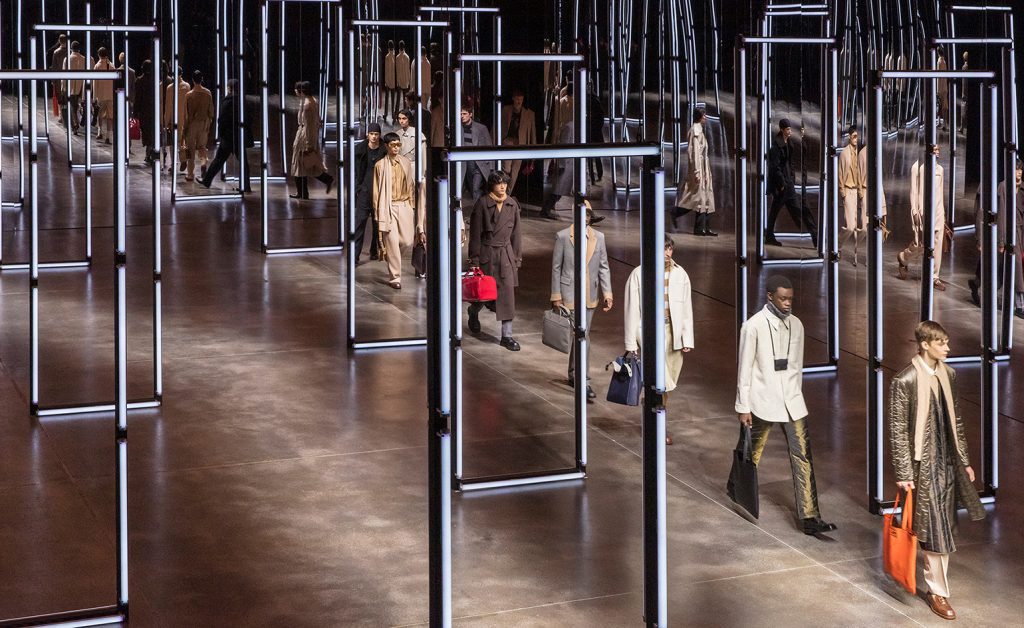
Outside of most things in our digitally charged world, the luxury shopping goods market turned up fashionably late to the e-commerce space but has quickly grown and adapted to the arena showing impressive growth with multi-fashion retailers such as Net-A-Porter, Farfetch & Browns Fashion leading the charge. From Chanel’s 49.2M Instagram followers, Louis Vuitton’s chatbot which was used to revolutionize the customer service process by introducing a seamless communication stream and more personalized experience to consumers, to the use of intelligent marketing techniques: utilizing algorithms, artificial intelligence (AI) learning systems, visual search functions, and the practice of analyzing consumer behavior to predict purchase trends in the e-commerce space; the need to make the consumer journey more efficient and personalized has been paramount to brands that consider themselves ‘luxury’. The retail sector, for years, has been slowly but surely strategically improving the way in which it targets its audiences, turning their mild curiosities, interests, and intrinsic aspirations into a psychological expedition in order to increase sales, and it’s no secrets that their incessant toe-dipping in technology has played a big part in this.
With the declining average age of the luxury consumer changing from 48 to 34, this has unquestionably impacted shopping behaviours – and as millennial and Gen Z shoppers emerge as a key group in the luxury consumer market (making about 42% of their purchases exclusively online), this has seen an overall gradual shift to a more omnichannel approach to shopping by patrons. However, as the ease of access increases, the main tenet of luxury – its inability to be available to the masses – decreases rapidly. Nevertheless, despite the uncertainty about the idea of what ‘luxury’ means anymore, there’s no doubt that super brands are having to adapt quickly to changes, or risk being left behind and overtaken by the competition, with predictions showing an increase in the percentage of online sales for luxury goods, growing from 10% in 2018 to 25% by 2025, according to McKinsey & Company.
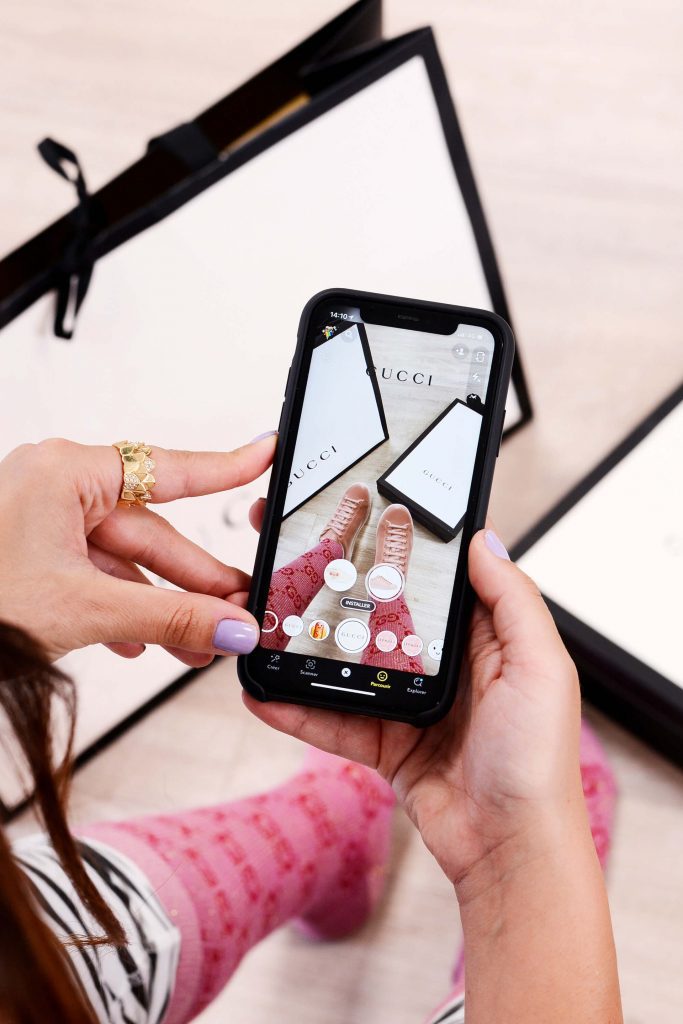
An early adapter to the use of advanced technologies (namely, augmented reality (AR)) was the Kering group-owned Italian fashion powerhouse, Gucci. From early 2020, with plans which were clearly heavy-laden prior to the pandemic, the uncertainty and immediate rush to online destinations for purchases allowed the luxury shopping goods retailer to really show us what innovative and refined virtual shopping could be. With the use of its Gucci iOS app customers were able to use AR to ‘try on’ the brands’ newest sneakers, watches, hats, and nail polish shades all from the comfort of their home, as well as explore the realms of interior decorating with the latest in Gucci furniture. With some brands speeding ahead of the curve, competitors, such as Chanel lag ever so slightly without an e-commerce storefront, and ultimately will have to increase their digital propositions in order to keep up despite being a reigning name in the social media sphere.
So, as the world rapidly turns virtual, what are brands to do to offer the same luxurious experience online that they do in-store? One of the main value propositions luxury shopping holds is its innate ability to tailor every moment of a customer’s experience and personalise it, and this is what will be a key driving force in its ascension as a key method of shopping. With the idea that “the bridge between what humans can offer and customers demand is data” as described by Moda Operandi CEO, Ganesh Srivats (Source), the obtainment of this information through analytics and AI give the user what they didn’t even know they needed until it was recommended to them; with almost 50% of luxury shoppers (according to a 2017 Deloitte report) desiring this personal touch. Another way in which we’ve seen luxury stay innovative in the digital space is the “see now, buy now” proposition. With the ability to purchase items straight off the runway after fashion shows (Burberry was one of the first to spearhead this in 2016) patrons are given an exciting and rare chance to be the first to own items not out to the general public making them feel special and regarded.
As brands such as Prada collaborate with online retailers, Dolce & Gabbana’s virtual boutique and London, Paris, New York, and Milan effectively closed for this year’s fashion weeks, brands including Dior, Louis Vuitton & Hermès have flocked online and to social media spaces such as Youtube, Instagram and LinkedIn to show off new collections to the masses. An expected, yet still disappointing foreshadowing of the changes we can expect for this month to Septembers’ fashion calendar due to social distancing measures this year will see an industry-first in the forms of totally virtual fashion weeks.
With so much to consider, it’s easy to assume that brick and mortar retail will be a thing of the past once the dust settles. Will the convenience and comfort of seeing what you want through a screen negate the once serotonin-inducing thrill of browsing stores for what was new in? Or will luxury’s appeal still be able to reign in a world where we’re all (literally and metaphorically) switched on and plugged in? Personally, I doubt it, because when it comes down to it, nothing can supersede the unique customer experience offered by luxury retailers. Digital advancements are a rite of passage as the world progresses, and failure to adapt means brands who don’t come on board will be left behind, but with the use of omnichannel approaches, things are set to diversify for the better. Shopping – like life – will never be the same as it once was, safety measures will be of high priority (and rightly so), but after months of lockdowns and isolation I know I’m not alone in the hopes that I’ll soon be able to have a sip of champagne whilst browsing for items I never knew I needed.

